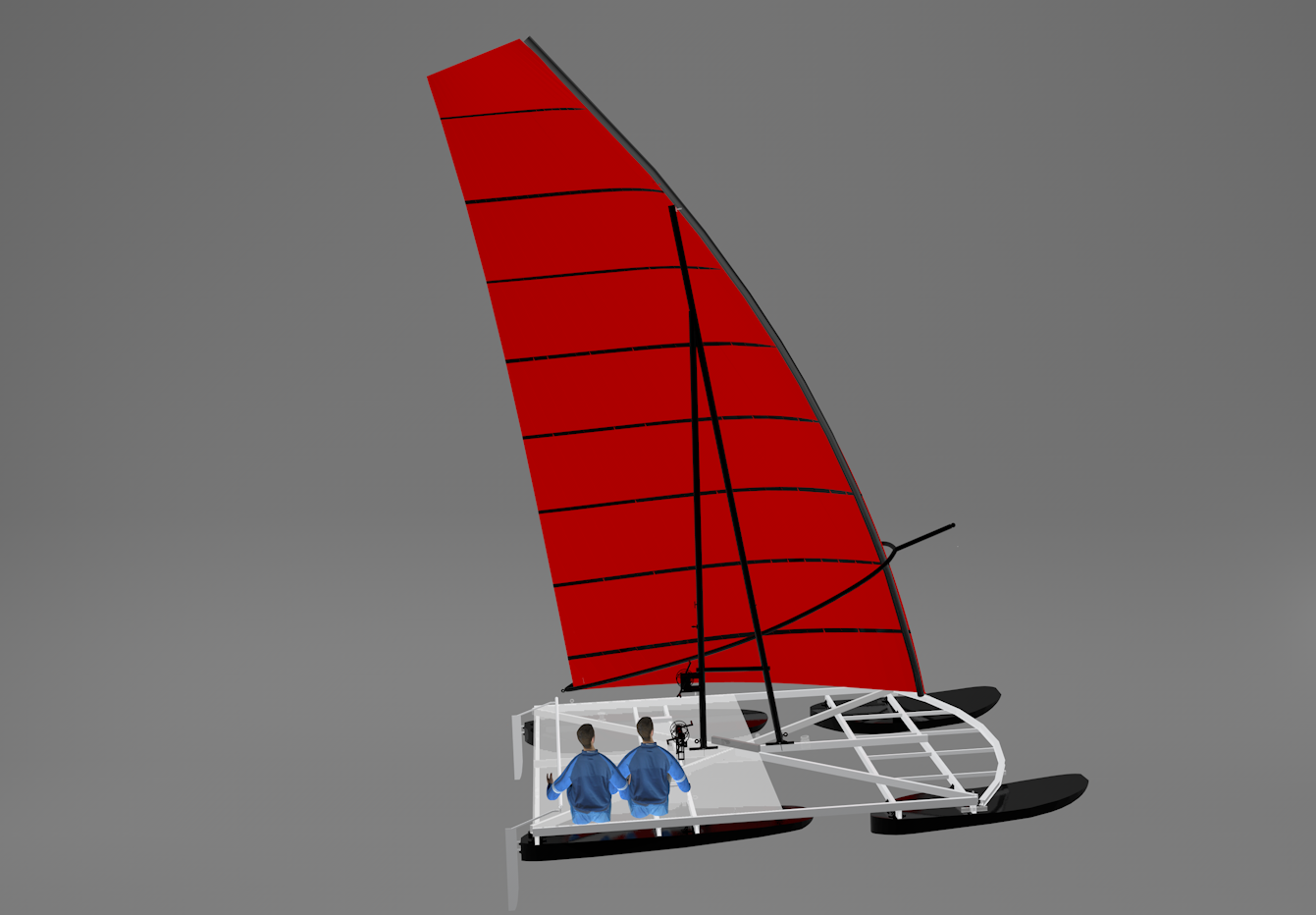The drama unfolding at the Volvo Ocean Race has been captivating. First, the grounding of Vestas, with the Dutch navigator Wouter Verbraak being responsible.
Next, the great victory of Brunel, a largely Dutch team, in Dubai. Skipper Bouwe Bekking did a great job. Rock bottom (literally) and sky high for the Dutch in a very short time span.
As for Wiebel, we haven’t published much lately, but that doesn’t mean nothing is happening. The scale model has been upgraded in the last few months. The frame of the earlier model had too much torsion, so the entire frame was rebuilt on the basis of stronger beams. The fin boxes were also rebuilt. The stays were also modified.
The boom was replaced by a simpler one, as the original boom experienced fatigue. The sail was also tuned again. The rudder was slightly modified. The rail was removed for the time being, in order to keep the boat simple. The rail will be re-installed later on.
All in all, the boat has become substantially stronger, especially on torsion stiffness. This was necessary, because in order to go faster, the counter weight needs to be increased, and the frame needs to be able to carry the greater counter weight without excessive deformation.
The boat now weighs about 3kg, and the counter weight was also 3 kg. The sail measures about 1 m2. We therefore currently have about 6 kg per square meter. The world records of Antoine Albeau and Finian Maynard have been set with over 20 kg per square meter, so we still have some way to go, even if it just a scale model. Nonetheless, the boat is improving.
We tested the boat yesterday. The wind was allright, but not great. The video is provided below. It can be seen that the frame is more stable than before. The top speed is about the same as in the earlier videos, but since the boat is heavier and the wind was not great, that is an improvement. The boat came out of the test fully intact, which is the first time. We are therefore improving in the reliability department as well.
The boat also does not make any nose dives anymore. That is perhaps the biggest improvement. In terms of safety for the sailor, it is essential to prevent nose dives.
It remains quite difficult to sail with only the rudder under control and everything else fixed. Simple to construct, but difficult to sail. Therefore, in the video the boat changes in speed quite often, depending on the right airflow or not. The speed bursts are relevant for further developments.
The sail is mounted a bit too high. Funny how difficult it is to mount it low enough to “close the gap”.
At 00:29 there is a splash behind the boat. Apparently the frame has hit a wave. This is an indication that the boat may be too low. We may need to increase the height.
At 00:34 the boat hits the bottom, and the leeside comes out of the water. It looks funny, but no damage was done. The testing was perforned at Makkum, The Netherlands, and some areas are extremely shallow.
We hope to be testing in good wind conditions soon to push the speed envelope.
We are gradually making progress on the full size boat. I hope to discuss that in another blog sometime soon. There is a great belief that it will be substantially faster than the Flying Phantom and other foiling cats, because it is more efficient and better geared for high winds.

